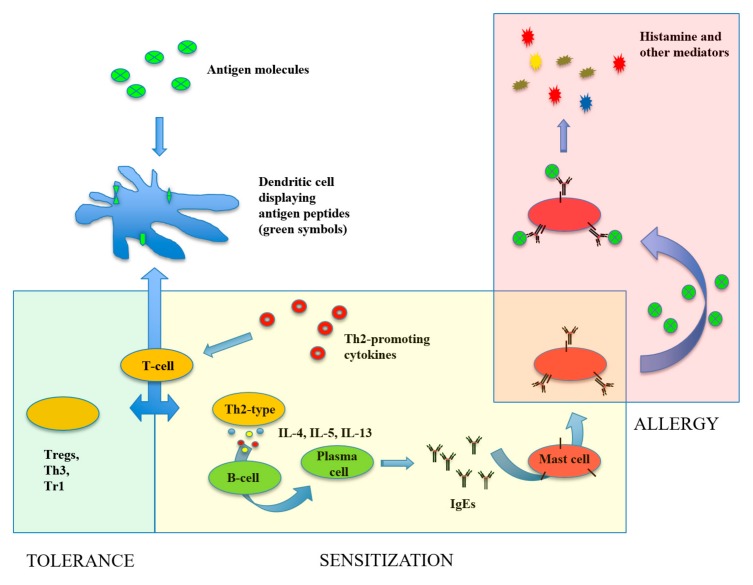Figure 1.
The onset of food allergy reactions. In the gastrointestinal tract, the food antigenic proteins are captured by dendritic cells (DCs) and hydrolysed into small peptides, which are displayed on the cell surface associated with the molecules of the major histocompatibility complex. After migration to the mesenteric lymph nodes, DCs interact with T cells to initiate the adaptive immune response. In the absence of particular stimulatory signals, T cells differentiate into suppressive T cells (Treg, Th3, Tr1) originating a tolerance status (green area). It may happen, however, that in the presence of Th2-promoting cytokines (occurring in the gastrointestinal tract, in the skin and respiratory tract, especially in the presence of epithelial injuries) T cells become Th2-type helper T cells. The Th2-type cells migrate to different tissues and produce specific cytokines (IL-4, IL-5, IL-13) that can induce differentiation of food antigen-specific B cells into plasma cells producing antigen-specific IgE. In the so-called sensitization phase (yellow area), the produced IgE molecules bind to specific receptors on the tissue mast cell. From now on, a subsequent interaction of the antigen with its specific IgE bound to the mast cells will cause mast cell degranulation with release of molecules, such as histamine, prostaglandins, tryptase and cytokines, leading to allergic reaction (red area). More details on the pathogenesis of food allergy can be found in specific review articles [2,3].

